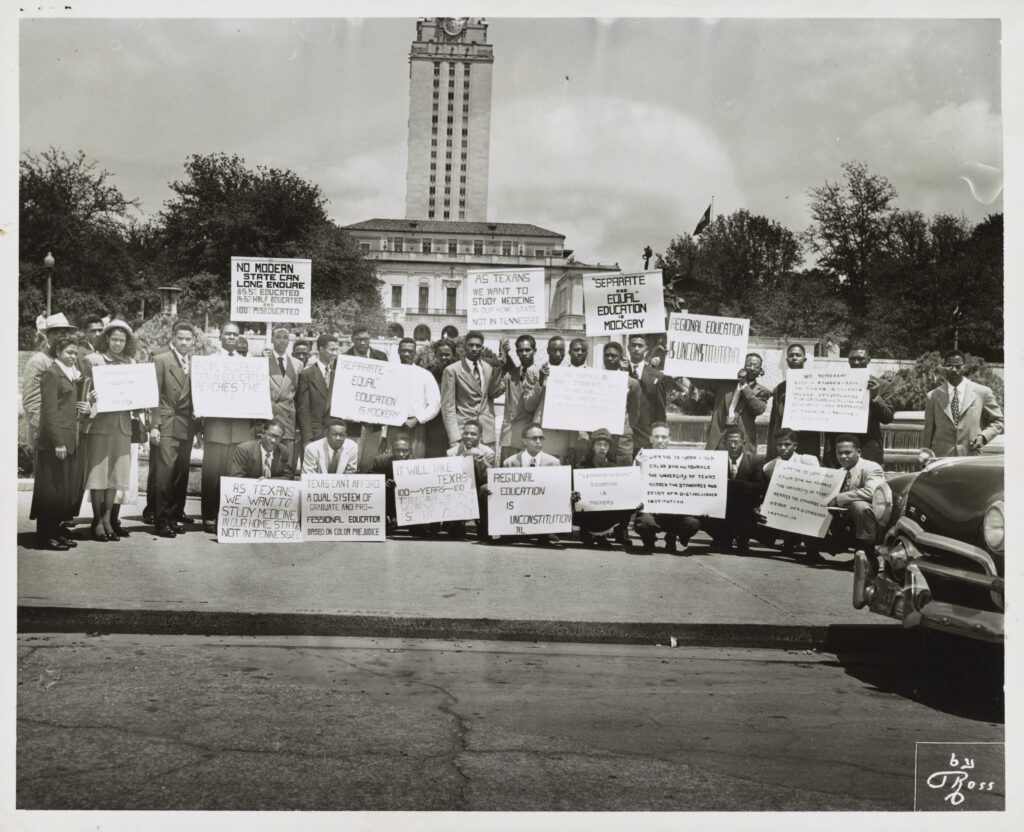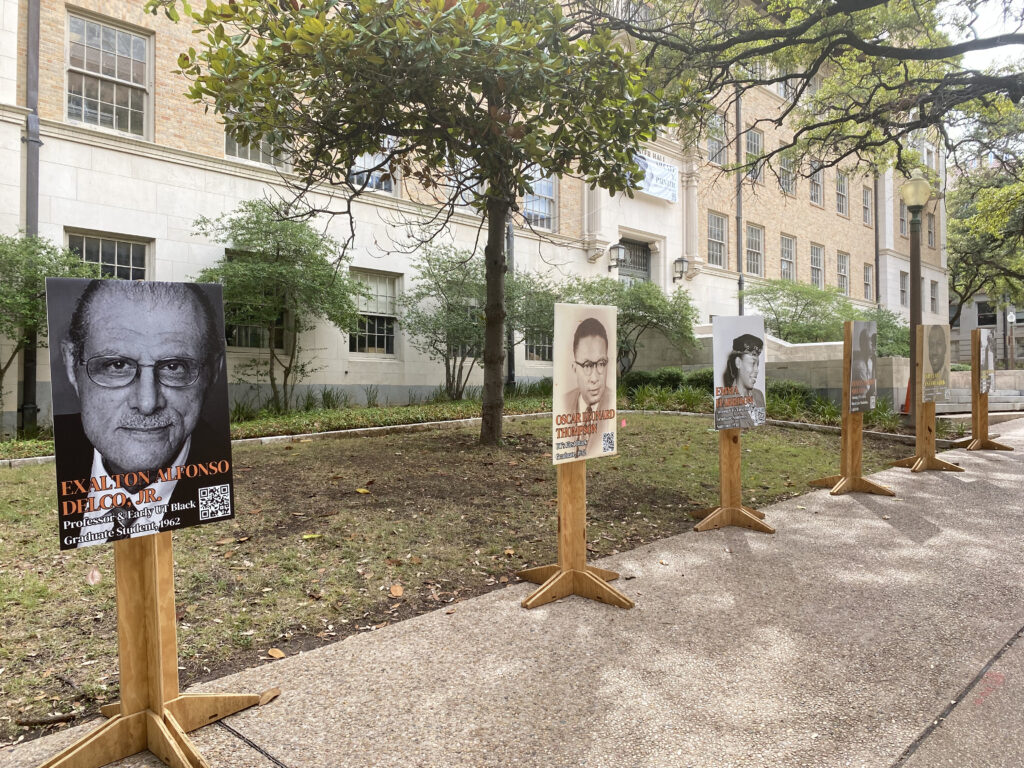
Site Activation of the Sweatt v. Painter Art Installation
September 11–22, 2023
Breaking Barriers was a temporary art installation and now continues as a public history about the Black Texan activists, students, professors, and the wider community who helped end racial segregation at The University of Texas, in Austin, and in our nation. In the 1930s and 1940s, Black Texan NAACP Civil Rights organizers laid the groundwork for a massive, statewide push to challenge segregation in education. In 1950, they triumphed when the Sweatt v. Painter case was decided unanimously by the U.S. Supreme Court, ending racial segregation at the UT Law School and graduate school. The first cohort of Black graduate students immediately enrolled at UT after the historic ruling, opening the doors of The University of Texas at Austin and taking a key step in integrating higher education generally.

Sweatt v. Painter Commemorative Project
The Sweatt v. Painter Commemorative Project seeks to research and educate about the University’s process of racial integration. The project takes its inspiration from the seminal 1950 Sweatt v. Painter Supreme Court case that initiated the process of integration for UT and higher education in this country. In this case, Heman Sweatt successfully sued The University of Texas, represented by President T. S. Painter, to gain entry to the institution’s racially segregated law school. Sweatt was supported in his effort by the NAACP, including such central players as Thurgood Marshall and Lulu B. White. This commemorative project recognizes these principal protagonists and the expanded access to the University afforded by the case.
The Sweatt v. Painter Commemorative Project entails the construction of a new Heman Sweatt entrance to Painter Hall, including a commemorative exterior, both outside and just inside the new entrance. This project serves to instruct about the historical significance of Heman Sweatt and other key figures in the legal struggles for racial integration in higher education at UT and around the country.
Along with its commemorative dimension, the Sweatt v. Painter Commemorative Project will provide contextual information. Accordingly, an exhibition-event space will be dedicated to narrativizing the legal history of racial segregation and integration in public higher education and UT Austin’s role in these processes.